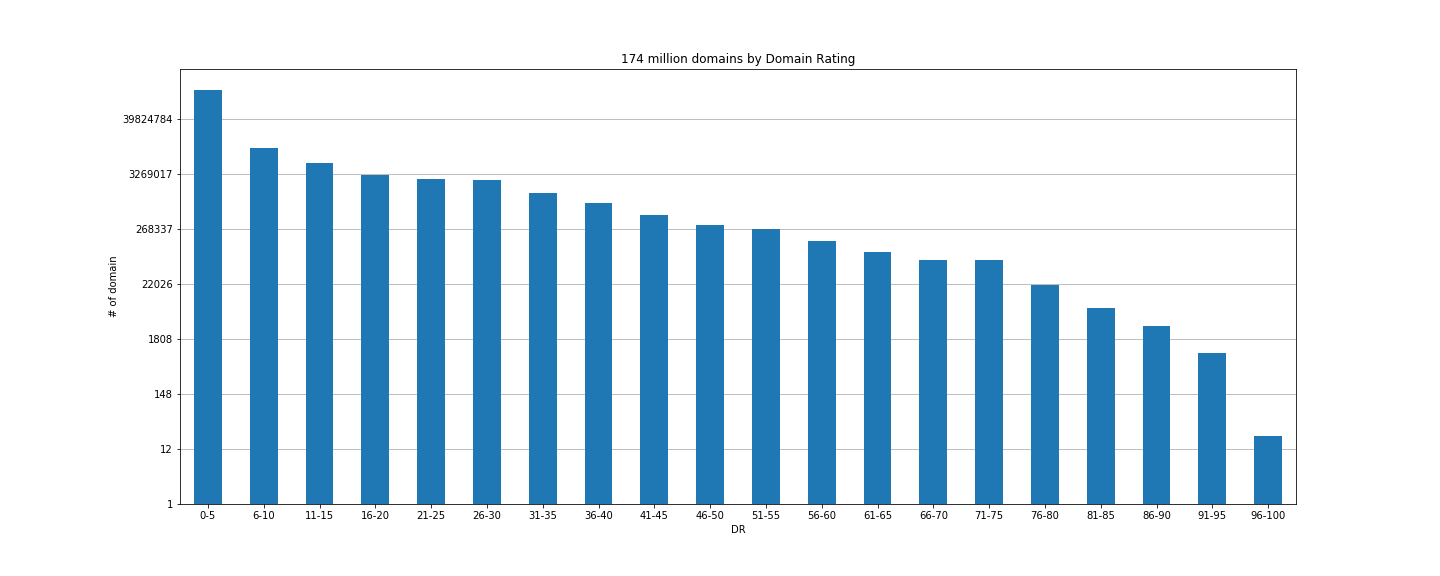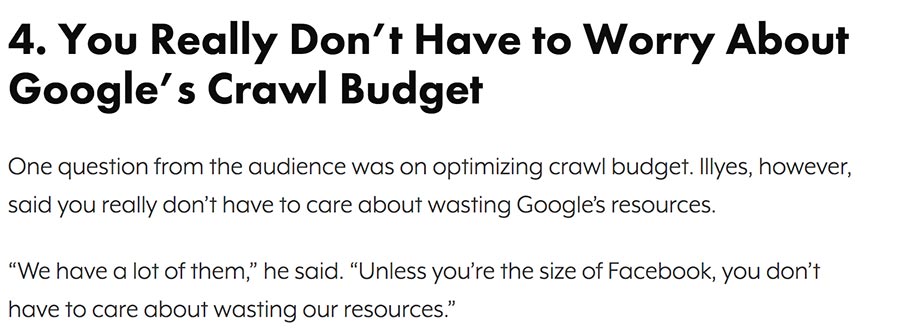
What is the Ahrefs’ Domain Rating
Domain Rating (or DR) is one of the most prominent metrics in Ahrefs that you can see in nearly every report we have.
A lot of our customers track fluctuations of their websites’ DR almost religiously and quite often get very nervous if it drops by a few points.
Well, next week we’re going to roll out a new and improved formula of how we calculate Domain Rating.
As a result, the vast majority of sites that currently have DR 30–50 will drop to nothing (because, in fact, they don’t deserve to have the “medium” DR that they currently have).
And since this change will affect almost every website in our database (some more, others less), we decided to let everyone know about it upfront to prevent any panic. #ahrecalypse
Other than that, this is a perfect chance to further educate you about this metric and help you integrate it deeper into your marketing workflows.
And, before we start, there’s one quick (and somewhat silly) thing that I need to clarify:
The sudden drop in DR that is about to happen has 0 connection with how your website ranks in Google. We’re just changing the way we calculate this metric. There’s nothing to worry about.
Da for keyword research : DA stands for Domain Authority where it is the main source of strength for a website that leads to a ranking system and algorithm from a system that has been implemented by the search engine and is also used to determine where or how much position your website is in a search engine.
And now onto the Q&A:
What is Domain Rating (DR)?
Table of Contents
Domain Rating is a proprietary Ahrefs’ metric that shows the strength of a target website’s total backlink profile (in terms of its size and quality).
DR is measured on a logarithmic scale from 0 to 100, with the latter being the strongest.
“logarithmic scale” means that the gap between DR 77–78 is much bigger than the one between DR 27–28. In other words, the higher your DR gets, the more challenging it will be to grow it by another few points.
Are Domain Rating and Ahrefs Rank connected?
Yes. In fact, they’re almost the same.
Ahrefs Rank orders all websites in our database by their “raw” DR values. So you can think of AR as a much more granular DR.
I mean imgur.com, ted.com and hp.com all have the same DR of 91. But, clearly, their backlink profiles are different and there should be the strongest one and the weakest one among them, right?
You can see that by looking at their Ahrefs Rank:
- Ahrefs Rank 307 — imgur.com
- Ahrefs Rank 308 — ted.com
- Ahrefs Rank 309 — hp.com
But what you can’t see with Ahrefs Rank are the “gaps” between websites’ backlink profiles.
I mean the difference between the backlink profiles of imgur.com and ted.commight be vastly bigger than between ted.com and hp.com but you can’t see that with Ahrefs Rank. It only orders them by the strength of their backlink profiles, without showing you how far away from each other they actually are.
How do you calculate Domain Rating?
To put things simply, we calculate the DR of a given website the following way:
- Look at how many unique domains have at least 1 dofollow link to the target website;
- Take into account the DR values of those linking domains;
- Take into account how many unique domains each of those websites link to;
- Apply some math and coding magic to calculate “raw” DR scores;
- Plot these scores on a 0–100 scale (which is dynamic in nature and will “stretch” over time).
But the above information might be totally meaningless to you. So let’s reframe it in a much more actionable way:
- The second, third and subsequent links from the same website will not improve the DR of a target website;
- The more unique websites a site links to, the less “DR juice” it will transfer to each of them;
- If the website is only linking to you via nofollow links, it won’t increase your DR;
- If the linking website gets more backlinks and their DR increases, that will positively affect the DR of each website that they link to (with dofollow links).
All these explanations are obviously simplified, but hopefully they give you a rather clear understanding of how DR is calculated and what it means for you.
Can you help me make sense of different DRscores?
It’s good to know what Domain Rating means and how it is calculated. But it gets even more actionable if you know at least some average metrics of the websites in different DR “buckets.”
First of all, let’s plot all the websites in Ahrefs’ database by their DR, so that you can get a sense of the competition level in each DR bucket:

And here’s that plotted on a logarithmic scale (which should help you make more sense of the DR ranges):

Here are some numerical values too:
- DR 0–5: 146,455,043 domains
- DR 6–10: 10,322,431 domains
- DR 11–15: 5,171,577 domains
- DR 16–20: 3,085,066 domains
- DR 21–25: 2,499,437 domains
- DR 26–30: 2,493,952 domains
- DR 31–35: 1,377,630 domains
- DR 36–40: 861,493 domains
- DR 41–45: 494,599 domains
- DR 46–50: 313,324 domains
- DR 51–55: 268,988 domains
- DR 56–60: 152,985 domains
- DR 61–65: 93,021 domains
- DR 66–70: 64,713 domains
- DR 71–75: 64,898 domains
- DR 76–80: 21,209 domains
- DR 81–85: 7,368 domains
- DR 86–90: 3,175 domains
- DR 91–95: 967 domains
- DR 96–100: 22 domains
Another popular question that I see asked a lot is this one: to reach DR XX ?
Like I just said, DR is not calculated from the quantity of the linking websites alone (see the above section). But if you need a point of reference, here are the average numbers of ref.domains per website in each DR bucket:
- DR 0–5: 1d.ref.domains
- DR 6–10: 30 d.ref.domains
- DR 11–15: 44 d.ref.domains
- DR 16–20: 57 d.ref.domains
- DR 21–25: 85 d.ref.domains
- DR 26–30: 137 d.ref.domains
- DR 31–35: 547 d.ref.domains
- DR 36–40: 314 d.ref.domains
- DR 41–45: 263 d.ref.domains
- DR 46–50: 352 d.ref.domains
- DR 51–55: 444 d.ref.domains
- DR 56–60: 708 d.ref.domains
- DR 61–65: 956 d.ref.domains
- DR 66–70: 1,374 d.ref.domains
- DR 71–75: 2,789 d.ref.domains
- DR 76–80: 6,761 d.ref.domains
- DR 81–85: 16,425 d.ref.domains
- DR 86–90: 36,811 d.ref.domains
- DR 91–95: 637,650 d.ref.domains
- DR 96–100: 8,891,919 d.ref.domains
I must once again stress that these numbers are just raw approximations. Please don’t ask our support team why you’ve reached 444 ref.domains and your DR is still 48.
Which DR range is considered “bad” or “spammy”?
There’s a lot of uncertainty and mixed opinions in the SEO space on the topic of “bad links.”
Some say that “real‐time Penguin” will no longer penalize you for having a bunch of “questionable” links (it will simply ignore them). Others say that you should watch your backlink profile carefully and disavow any link that looks suspicious.
Ahrefs is not an SEO agency and we don’t have any hands‐on experience with spammy link building and recoveries. So we can’t really comment on which is the right thing to do.
But here are some popular questions related to “bad links” that we’ll be happy to address:
- Should I bother getting links from websites below DR30?
- Should I disavow links from sites below DR20?
- Which DR range do SPAM sites fall into?
And the answer is…
Domain Rating is NOT a measure of a website’s quality and legitimacy. You cannot rely on this single metric alone in determining if a website is spammy or not.
I mean, if I start a brand new website and build a few links to it, it might appear in Ahrefs as DR3. Does that mean that my website is super spammy and you should avoid it at all costs?
Of course not! It’s just brand new and hasn’t yet acquired enough backlinks to warrant a high DR score.
However, if you see that a website has a ton of referring domains, but the DR is low — that is an indication that all of their linking domains are very weak and don’t pass enough authority.
You might want to examine these backlinks manually and see if they’re natural or spammy. Just browse them and ask yourself these questions:
- What’s the quality of the linking page?
- Does this link look natural or “artificial”?
- How likely are visitors to click on this link? (where is it located?)
- How many other outgoing links are on that page?
- Does the anchor text look manipulative?
- Etc.
Do you transfer DR to a subdomain?
Let’s look at the DR scores of wordpress.org and its subdomain codex.wordpress.org — both show DR98.
But wordpress.com and discover.wordpress.com have DR98 and DR73 respectively.
Why is that?
Well, we have a number of so‐called “service root domains” that we don’t think should pass their DR value to their subdomains.
These are the sites where anyone can launch a subdomain and put some content there. And because the resulting “sub‐sites” will belong to different (random) people and have entirely different content and purposes, they cannot magically inherit the high DR of their parent website.
WordPress.com is one of these sites, while WordPress.org is not.
Here are a few more examples of “service root domains”:
- wordpress.com
- typepad.com
- squarespace.com
- blogspot.com
- tumblr.com
- webs.com
- hubpages.com
- wikispaces.com
One of the most noticeable differences between Ahrefs DR and Moz DA (apart from Ahrefs’ vastly larger and more frequently‐updated backlink index) is that they don’t treat the subdomains of the aforementioned sites in the way that we do.
Does Ahrefs use Domain Rating to prioritize crawling the web?
Yes, Domain Rating is one of the factors that we feed to our own crawler. It helps us decide how many pages of a given website we want to crawl (how “deep” we want to go).
So for a DR10 website we’ll crawl ~1000 URLs and for a DR60 website we’ll go above ~10M URLs (the numbers are arbitrary and meant only to illustrate the concept).
The web is not a tidy, structured, or logical place. It’s dark and nasty. There are tons of ugly websites that generate millions of pages, some by mistake and others purposefully. And having this kind of heuristic in place allows us not to waste resources on crawling all that junk.
I bet at this point you’re wondering if Google has something along these lines implemented in their own web crawler.
We think it might actually be true. But let’s not forget that Google has enormous resources, so they can loosen their heuristics as far as they want.

Even at Ahrefs, this DR‐heuristic only applies to spam sites, huge ecommerce websites, big forums and wiki sites. For the vast majority of websites, we allocate a much larger budget than their number of “good” pages.











